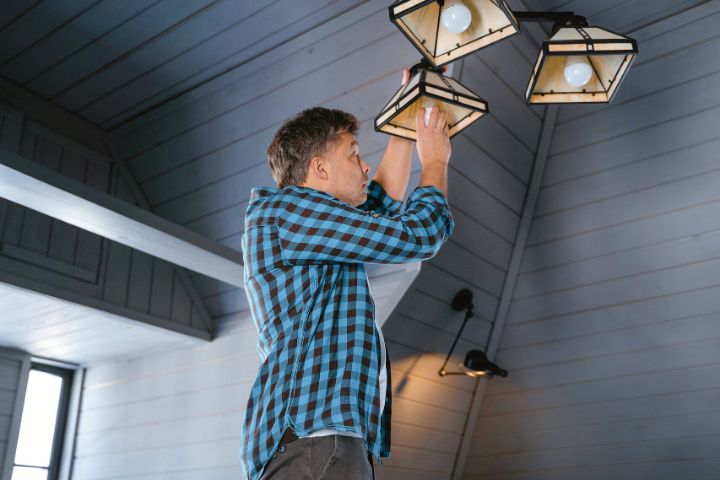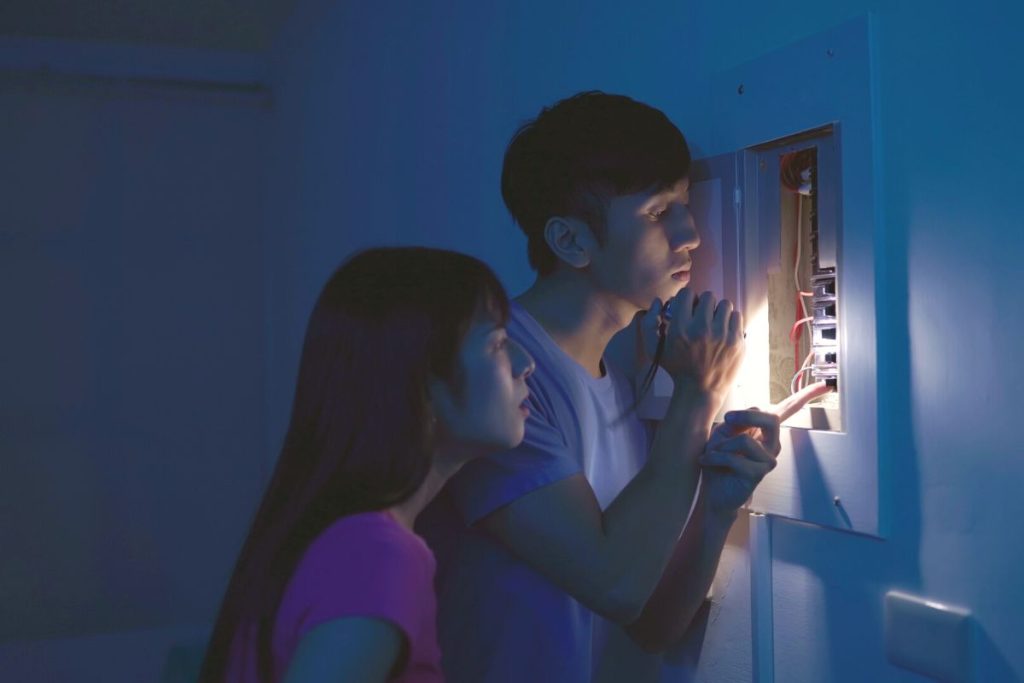When you start noticing your light source starting to flicker, it means one thing, you need to find a solution. However, there are a number of reasons why the light bulb could be flickering, which can include things as simple as the bulb coming towards the end of its life cycle and needing replacing, to there being a worrying problem with the wiring of the home or office – which is likely to require a master electrician to look at.
Is my flickering light a cause for concern?
While flickering lights are not always indicative of a major electrical problem, if they have been flickering with great frequency and aggressively, it might mean they need a check-up.
A call to professional electricians should be made if it appears the issues are stemming from loose wiring, a malfunctioning light switch or great fluctuation with the voltage.
How do I know if the flickering light is a serious problem?
There are certain telltale signs you should look out for to know if you should call the experts in as a matter of urgency. The three main points to look out for are;
- Persistency – how long has it been going on?
- Severity – is the flicker subtle or is it very heavy and noticeable?
- Consistency – how often does it happen? On the odd occasion, or every time you switch the light on?
Causes for your light to flicker
Light Bulb

The first and easiest place to start is with the lightbulb itself. Regardless of whether your light bulb is an LED, CFL, fluorescent, halogen etc. they all eventually reach the end of their life cycle, and when they do they start to flicker.
There is also a possibility that the bulb hasn’t been fitted correctly so it is a little loose, and simply needs tightening, or that the light bulb’s current is not compatible with that fixture. You can also find that certain bulbs don’t work with certain switches. For example, if you have a dimmer switch which controls the level of lighting, it’s often found that certain light bulbs such as fluorescent, CFL and LEDs can have problems adapting and will flicker when switched on.
Circuits Overload
If you have changed the light bulb and find that the flickering still does not stop, then there is a chance that the circuit board of your house is overloaded. If your home has a number of electrical appliances such as a washing machine, air conditioner, dishwasher, fridge etc. then these appliances tend to take up a significant amount of electricity.
When these appliances are operated simultaneously, it can overload the circuit which results in fluctuation, loss of power in the house because the motherboard trips or the lights tend to flicker. Essentially the house is using more electricity than the circuit board has the capacity for.
If you discover this to be the case, then it’s important to call a professional electrician to come and upgrade the switchboard to allow it to cater to a larger demand. If nothing is done about this there is a risk of the electric board overloading and potentially catching fire, so don’t delay and get the experts in to deal with it as soon as possible.
Malfunctioning Switches
Another potential problem leading to the lights flickering can be an issue between the switch and the light bulb. There is a possibility the current is not reaching the bulb with full power leading to the flickering. Try taking the bulb out and re-screwing it back in. If that doesn’t do anything then the light switch may need replacing, however, this isn’t a simple DIY job and would require you to call an electrician to carry out the task.
Faulty Wiring

The switch, electrical board and light bulb might all be working fine, but the flickering still continues, so the next aspect to take into consideration is how the wiring was done, and how long ago it was installed. Wiring eventually needs replacing after a period of time, or if the wiring was poorly installed then this could be the reason for the flickering or dimming of the lights or general inconsistent power.
Loose or outdated wiring can lead to electric malfunctions, short circuits and can often lead to electrical fires breaking out. When calling an electrician, get him to check all the different facets, including the wiring to see if it needs to be re-done, in which case don’t delay and get it done as a matter of urgency!
Fluctuations
An average household should have a voltage which ranges between 115 to 125 volts. Purchasing a voltmeter allows you to check the voltage of your household by plugging in the reader. If the voltage is below 115 or even above 125 it’s quite possibly the reason why your lights are flickering or the appliances in your home are not working the way they are supposed to.
Flickering, dimming of lights and appliances not working to their full capacity are telltale signs of the voltage not being the right amount. For example, if you have started the washing machine and the lights start to fluctuate, and then stop once the machine’s load is complete, then you either have too much or not enough voltage. This is another problem which has to be resolved by a professional so be sure to have an electrician’s number on hand.
Remedies for my flickering lights
When dealing with faulty lights, it’s important to take the right safety precautions before you decide to find a solution. When dealing with most things electrical, it’s highly recommended to call in a professional electrician or engineer, who is trained and with the correct equipment, to deal with live electricity which can have fatal consequences if something goes wrong.

If you do have some experience and are confident you can identify and resolve the problem yourself, then it’s imperative you use the correct protective equipment before you try fixing anything. We recommend that the essentials you should have are:
- Electrically insulated working gloves
- Safety glasses
- Steel-capped/closed-toe working shoes
- Full sleeve work shirt and long pants
- Fully equipped tool-box
Though it’s not always possible if given the choice you should always have someone with you when working who can help and advise, and in worse-case scenarios react to any disasters.
It’s very important that you switch off the light in question from its switch and even from the main electrical board to be safe. Touching or trying to fix a bulb which has been on for a period of time is not advisable and you should give the bulb time to cool down before coming in contact with it.
It’s a common occurrence that when you replace the flickering bulb with a new one, the flickering continues, which is a sign of there being issues with the electrical board and the wiring which could be loose or old. In this case, we strongly recommend not to attempt to fix it yourself unless you have the relevant skills and equipment, and instead to call the professionals to deal with the problem.
FAQs
Can my flickering light lead to a fire?
Once you have established that the flickering light is not being caused by an overload of electricity usage caused by household appliances such as washing machines and dishwashers running at the same time, there’s a significant chance that ignoring the flickering light could lead to a fire as the most likely causes are faulty electrical boards or wiring which can trigger a fire.



